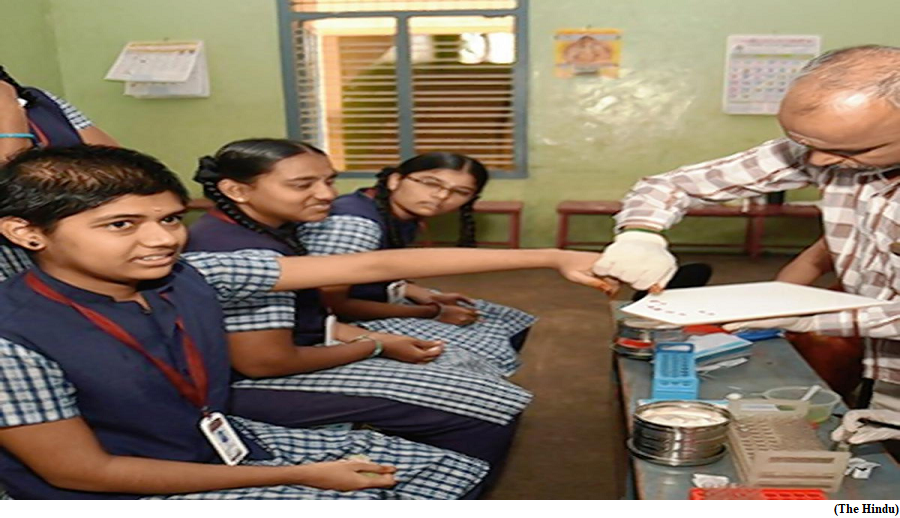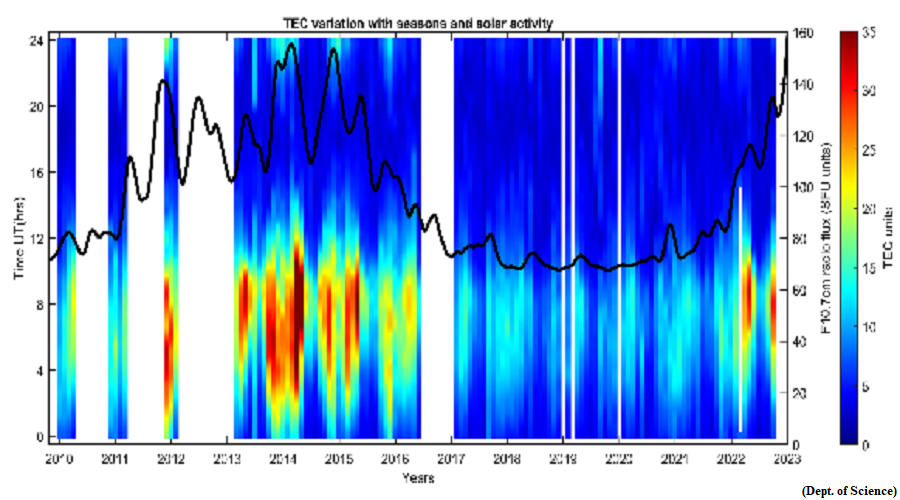India, Russia ink ‘key’ pacts related to Kudankulam nuclear power plant (GS Paper 2, International Relation)

Why in news?
- In a major boost to their time-tested partnership, India and Russia signed some “very important” agreements related to the construction of the future power-generating units of the Kudankulam nuclear power plant.
Details:
- External Affairs Minister S. Jaishankar made the announcement after his “comprehensive and productive” meeting with Deputy Prime Minister Denis Manturov on the bilateral economic cooperation.
- They witnessed signing of agreements on nuclear power and in areas of medicines, pharmaceutical substances and medical devices.
Kudankulam nuclear power plant:
- The Kudankulam nuclear power plant, India’s largest, is being built in Tamil Nadu with the technical assistance of Russia. The construction began in March 2002.
- Since February 2016, the first power unit of the Kudankulam NPP has been steadily operating at its design capacity of 1,000 MW.
- The plant is expected to start operating at full capacity in 2027.
ICMR initiates steps for non-invasive testingmethod to tackle anaemia
(GS Paper 2, Health)
Why in news?
- Anaemia continues to be a major public health problem in India despite the comprehensive Anaemia-mukt Bharat (AMB) programme.
- The Indian Council of Medical Research (ICMR), Delhi, has now invited Expression of Interest (EoI) from the eligible organisations, companies and start-ups manufacturing non-invasive haemoglobinometer useful in effective screening of anaemia.

Non-invasive devices:
- Testing and treatment of anaemia, using digital methods and point-of-care treatment, with a special focus on pregnant women and on school-going adolescents, is one of the key AMB strategic interventions.
- The test and treat strategy, for its effective implementation, requires a simple, easy-to-use non- invasive haemoglobinometer which will be acceptable to all, especially young children.
- Over the past few years, several ‘Make in India’ non-invasive haemoglobinometer devices have become available.
- However, these devices need to be validated to establish the accuracy, bias, and precision of the non-invasive point-of-care methods before their use can be recommended in the programme.
Prevalence of anaemia:
- In India, the prevalence of anaemia among six groups as per the National Family Health Survey 5 (2019-21) is 25% in men (15-49 age group), 57% in women (15-49), 31.1% in adolescent boys (15-19), 59.1 % in adolescent girls, 52.2 % in pregnant women (15-49) and 67.1% in children (6-59).
What’s next?
- The ICMR would conduct a hospital based clinical study to validate the promising non-invasive hemoglobinometers devices against the gold standard method of haemoglobin measurement.
Ionospheric secrets traced in the White continent can help satellite-based navigation
(GS Paper 3, Science and Technology)
Context:
- The cold dark winters and the bright sunny summer of Antarctica holds a secret in the ionosphere that scientists have traced recently.
- The day-night ionospheric density varied regardless of 24 hours of sunlight in summer and complete darkness in winter.

Details:
- Decade-long ionospheric observations at Bharati station, Antarctica, found a substantial seasonal variation with maximum total electron count (TEC) in equinoctial months followed by the summer and winter.
- Such long-term studies can help understand effects of ionosphere on satellite-based navigation and communication systems and to mitigate them.
Ionosphere:
- The ionosphere is a part of Earth’s upper atmosphere, which is partially ionized extending from 100-1000km.
- The ionosphere at polar regions is highly dynamic and acts as a major energy sink for space weather events, and related processes in magnetosphere-ionosphere systems as the magnetic field lines are vertical in this region.
- The ionospheric observations in Antarctica are few compared to Arctic region due to geographic limitations and limited number of stations.
Key observations:
- A team of scientists from the Indian Institute of Geomagnetism (IIG) have examined the long-term seasonal ionospheric observations at Indian Antarctica station Bharati between 2010 and 2022 and also with solar activity following Sun’s 11-year cycle.
- It was observed that though there was no sunlight incidence throughout the day in winter months (polar nights) at Bharati station; a diurnal pattern was observed with peak ionospheric density near local noon.
- The day-night ionospheric density variations were observed regardless of 24 hours of sunlight in summer and complete darkness in winter.
- The scientists attributed the peak ionization to particle precipitation and transportation of convectional plasma from high latitudes.
- Also, the maximum ionospheric density in the summer months where 24 hours sunlight is present (polar days), was about twice more than that of polar nights at the Bharati region.
Way Forward:
- This kind of long-term studies will help understand effects of ionosphere on satellite-based navigation and communication systems and to mitigate them.




